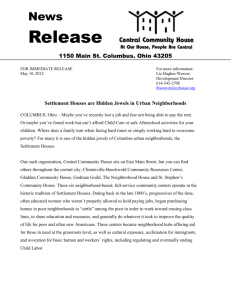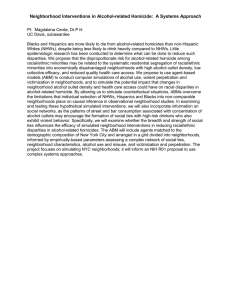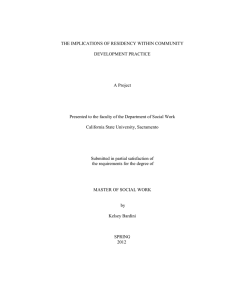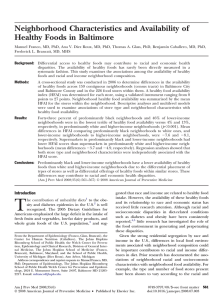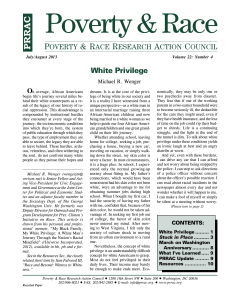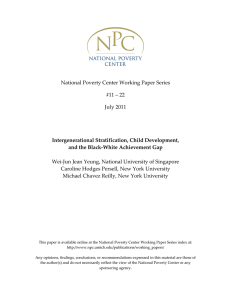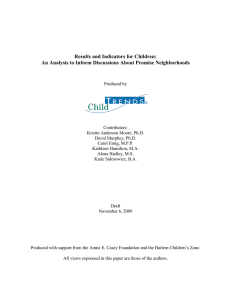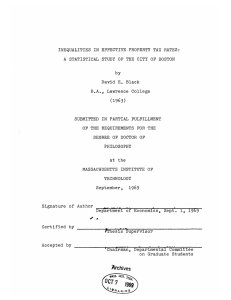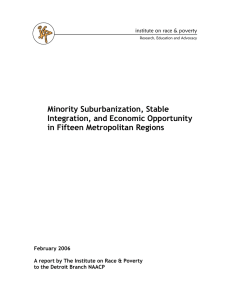Urban Geography Terms
advertisement
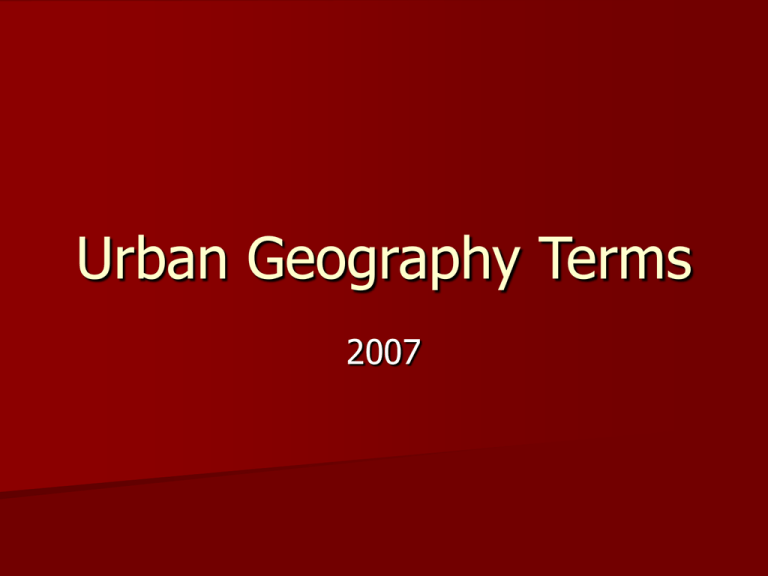
Urban Geography Terms 2007 annexation Legally adding land area to a city in the US barridas Basic industries Industries that sell their products or services primarily to consumers outside the settlement As opposed to non-basic industries, industries that sell their products or services primarily to consumers within the city Bid rent theory a geographical theory that refers to how the price and demand on land changes as the distance towards the CBD (Central Business District) increases. blockbusting A process by which real estate agents convince white property owners to sell their houses at low prices because of the fear that black families will soon move into the neighborhood Census tract An area delineated by the US Bureau of the Census for which statistics are published; in urbanized areas, census tracts correspond roughly to neighborhoods Central business district The area of the city where retail and office activities are clustered Central place A market center for the exchange of services by people attracted from the surrounding area Central place theory The theory that explains the distribution of services, based on the fact that settlements serve as centers of market areas for services; larger settlements are fewer and farther apart than smaller settlements and provide services for a larger number of people who are willing to travel farther centrality The strength of an urban center in its capacity to attract producers and consumers to its facilities; a city’s reach into the surrounding region Walter Christaller German, laid the groundwork for the Central Place Theory Colonial city A city that was deliberately established or developed as an administrative or commercial center by colonial or imperial powers commercialization Commuter zone Concentric zone model A model of the American central city that suggests the existence of five concentric land use rings arranged around a common center conurbation General term used to identify large, multimetropolitan complexes formed by the coalescence of two or more major urban areas Megalopolis Counter urbanization Net migration from urban to rural areas in more developed countries decentralization To distribute the administrative functions or powers of (a central authority) among several local authorities deindustrialization a relative decline in industrial employment Economic base A communities collection of basic industries Edge city A large node of office and retail activities on the edge of an urban area Employment structure The number of people in a region employed in basic and nonbasic jobs – Basic: Industries that sell their products or services primarily to consumers outside the settlement – Non basic: industries that sell their products or services primarily to consumers within the city entrepot A place, usually a port city where goods are imported, stored, and transshipped; a break of bulk point Ethnic neighborhood a neighborhood, district, or suburb which retains some cultural distinction from a larger, surrounding area favela A shantytown or slum, especially in Brazil Festival landscape filtering Gateway city A city that serves as a link between one country or region and others due to its physical situation gentrification The rehabilitation of deteriorated, often abandoned housing of low-income inner city residents ghetto An urban region marked by particular ethnic, racial, religious and economic properties Usually but not always a low income area Gravity model A mathematical prediction of the interaction of places, relative to population size and the distance between them greenbelt A ring of land maintained as parks, agriculture, or other types of open space to limit the sprawl of an urban area High-tech corridor Areas along or near major transportation arteries that are devoted to research, development and sale of high technology products Silicon Valley, US hinterland The sphere of economic influence of a town or city ‘country behind’ Hydraulic civilization any culture having an agricultural system that is dependent upon large-scale government-managed waterworks Indigenous city In-filling Informal sector Economic activities that take place beyond official record, not subject to formalized systems of regulation infrastructure The underlying framework of services and amenities needed to facilitate productive activity Invasion and succession A process of neighborhood change whereby one social or ethnic group succeeds another Lateral commuting Suburb to suburb commuting Market area The area surrounding a central place, from which people are attracted to use the place’s goods and services hinterland Medieval cities megacities A very large city characterized by both primacy and high centrality within its national economy MSA Metropolitan statistical area In the US a central city of at least 50,000 people, the county in which the city is located, and adjacent counties Multiple nuclei model A model of the internal structure of cities in which social groups are arranged around a collection of nodes of activities Multiplier effect Expansion of economic activity caused by the growth or introduction of another activity New basic industry job will create jobs directly or indirectly in the non basic sector neighborhood Office park Peripheral model A model of North American urban areas consisting of an inner city surrounded by large suburban residential and business areas tied together by a beltway or ring road Planned community Celebration, Florida large-scale, mixed-land-use developments that have socially diverse populations and conform to a single master plan Post industrial city Postmodern urban landscape A style characterized by a diversity of architectural styles and elements, often combined in the same building or project Primate city The largest settlement in a country, if it has more than twice as many people as the second-ranking settlement Racial steering the act of steering prospective homebuyers to neighborhoods which have residents of mostly their same racial background range The maximum distance people are willing to travel for a service Rank size rule The idea that the population of a city or town will be inversely proportional to its rank in the hierarchy redlining A discriminatory real estate practice in North America in which members of minority groups are prevented from obtaining money to purchase homes or property in predominantly white neighborhoods Officially illegal Restrictive covenants restrictions that apply to a group of homes or lots, property that's part of a specific development or subdivision give a development a more standard appearance control some of the activities that take place within its boundaries protect property values
